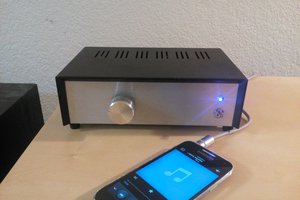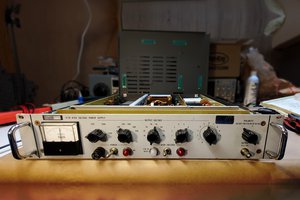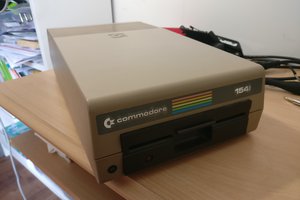I pre-ordered this computer in April, 1984, after attending a presentation at my workplace (I think). There was no internet as we know it back then. I distinctly remember some guy touting the amazing graphics and the advanced 8MHz 68000 CPU. I pre-ordered it on the spot. It cost $2500, with another $500 for the dot-matrix printer. That was a huge chunk of my income at the time, but my wife and I thought it would be a good way to introduce our children, age 4 and 7, to modern computers. My previous personal computer was a TRS80 model 4, with a whopping 48k of RAM and a home built 5.25” floppy controller, which my wife insisted that I sell prior to receiving the new Mac.
I replaced the Fat Mac with a Mac IIci in 1990. I had enhanced the Fat Mac as far as possible before retirement: it had a New Life board attached in order to run a 50MB SCSI hard drive (cost $1200). I think at some point I had replaced the power supply board as well. It has been relegated to an attic since then. I was loath to sell or dispose of it — either sentimentality or not willing to part with something that was perceived as valuable from an earlier era.
I recently decided to retrieve the old Mac and see if it still worked. When I plugged it in and turned on the power switch it demonstrated its unhappiness with a “flub-flub-flub” from its speaker. This indicated that the power supply board was probably the culprit.
The Fat Mac Power Supply:

 Bud Bennett
Bud Bennett



 Szoftveres
Szoftveres
 Yann Guidon / YGDES
Yann Guidon / YGDES
 Collin Matthews
Collin Matthews
 emuboy
emuboy
Hi Bud, I bought my MAC512 in 1985, in Aussie$ it was more than $5,000! The most expensive PC I've ever owned. It developed a problem with the mouse a few years ago and hasnt been used since, but in the Coronovirus lockdown here I took to get it going again. All went well, but when I fiddled with the keyboard, trying to get the cursor to move without the mouse, it started to sizzle and smoke form out back. I've taken off the back and located, roughly, where the problem is. Its the soldered components which make up the power supply. So now I must follow down your track and see if I can repair it (and the mouse).
Your blog has proved and is proving useful.
Kind Regards
Tony